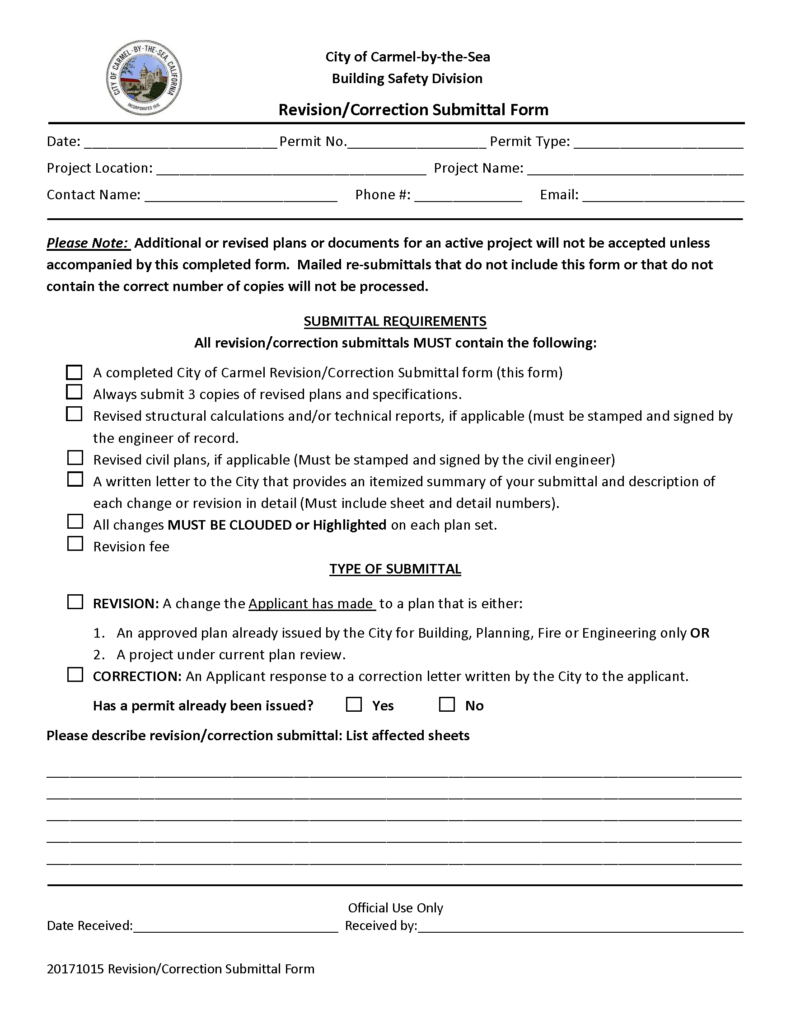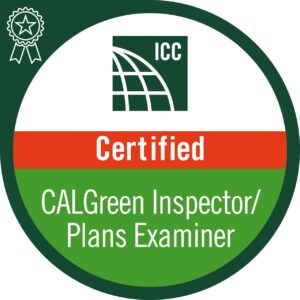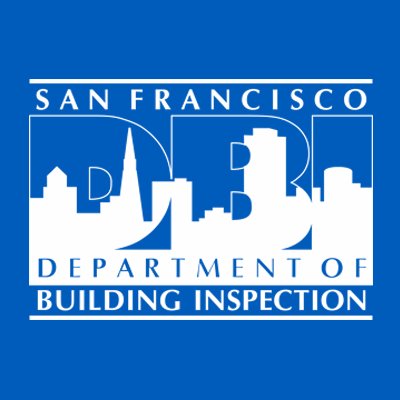CalGreen for Building Departments
CalGreen for Building Departments
Many building departments in the state have yet to develop a methodology for reviewing and inspecting the California Green Building Standards Code requirements. The lack of a clear process is confusing for permit techs, architects, and building inspectors.
The problem with CalGreen for building departments is a result of a number of issues. The first is that most building departments in the state are over-loaded. They are over-loaded by the sheer volume of work, reduced staffing, and all of the legal and other issues that government agencies must deal with.
The California Green Building Standards Code is very subjective. Like many sustainable endeavors, it is sometimes hard to justify certain code requirements. The other state building codes, for the most part, have clearly justifiable reasons for their requirements. This is not always the case with the CalGreen Code. As a result it can be difficult for building inspectors to enforce a requirement when the benefits are not clear.
Building department staff suffer from information overload. The voluminous California Building Code, with its never-ending revisions, along with government-mandated education and training is simply over-whelming. It is nearly impossible to keep up with it all.
Another problem is the lack of compliance effort by architects. Many California architects are unfamiliar with the CalGreen code requirements. Clearly the design industry is making little effort to incorporate CalGreen into their plans. The lack of buy-in by design professionals leads to less of an effort by plan reviewers.
All of the above reasons contribute to the lack of enforcement of the CalGreen Code. As with any law, if there is no enforcement, there is little incentive for compliance.
Even The Building Standards Commission Struggles
The Building Standards Commission faces its own challenges when it comes to leading the way on CalGreen. The BSC is staffed by only fourteen people. These include the Executive Director, Deputy Executive Director, six technical staff and the administrative staff. They have only one licensed architect.
I’m sure there are industry professionals right now questioning the above statement. “Fourteen people make up the Building Standards Commission? That can’t be right!”. This is the organization responsible for the 13 massive volumes of the California Building Code. It’s true though, as of this writing the entire BSC consists of fourteen people. You can see the staff list here. The fact that they have only one licensed architect on staff is almost beyond comprehension.
When you consider the on-going interim changes to all of the codes, plus the re-issuing every three years, it is a miracle the staff is able to accomplish as much as they do. It is also a rather sad commentary on the low priority the legislature places on the health and safety of of the homes and buildings we all occupy. Clearly the job of updating, educating and promoting understanding of our complex codes requires a much larger staff.
The lack of licensed professionals on staff is concerning for another reason. The reason is the lack of critical over-sight of the committees that are responsible for making recommendations for changes to all of the codes. Over the years these committees have become inundated, not with architects and engineers, but with representatives of private companies and industries. These groups bring their own self-interests into the process which is not always in line with the intent of the BSC. Since the BSC has only a single licensed professional on staff, over-sight of the committees and the myriad of proposed changes, is very limited.
The BSC mission includes educating local jurisdictions on the building code changes. The lack of staffing limits their ability to do so.

Building Department Solutions for Cal Green
We have created a guide to help building departments integrate CalGreen into their permit review and inspection process. It is available in both Power Point and PDF. You can download the pdf here. If you would like a free copy of the Power Point send an email to Gary Welch at the address below.
So what are the solutions? Here are some excerpts from our presentation, “CalGreen for Building Departments”.
Step One
Publish, or link, to the current CalGreen Checklists on the Building Department’s website.
Updating the city, or county, website seems to be a difficult challenge for many jurisdictions. Website design is frequently outsourced. As such, updates may incur costs that are not provided for in the building department’s budget. However, this is an important step in encouraging CalGreen compliance. It communicates to the architects that CalGreen Code compliance is a priority with your department. In addition, it eliminates any confusion as to how a project is to comply with the CalGreen Code in your jurisdiction.
As challenging as it may be for your department, updating your website with a link to your preferred CalGreen Checklist is the critical first step in improving compliance.
If updating the website is time or cost prohibitive, you can provide the website URL where the checklists can be downloaded. This information could be added to your Permit Submittal Guidelines document.
Which CalGreen Checklists to Use?
Many building departments publish their own checklist. This allows them to emphasize, or minimize, requirements specific to their locale. Furthermore, it can help architects understand the items they need to focus on for their permit plans. It gives them a simple road map to follow for design and permit compliance.
Is this a perfect system? No. A perfect system would require designers to incorporate every last detail of the CalGreen Code in their plans. Is that ever likely to happen? Probably not in the foreseeable future. Many jurisdictions have taken this practical approach. Plan reviewers and building inspectors have a simple compliance list that they can learn, review, and inspect. It reduces compliance confusion for all concerned.
The concept for the CalGreen Checklist format was developed from the LEED certification process. While the processes are quite different, the Building Standards Commission felt the checklist would help simplify the CalGreen permit process.
“We don’t’ have the budget/expertise to create our own checklist.”
There are three readily available checklists you can use for your department.
The first is the CalGreen Residential Occupancies Application Checklist published by the California Department of Housing and Community Development (HCD). This is for residential projects only and can be used both for new construction, or additions and alterations. You can link or download the checklist here.
Another alternative is the checklists published by the California branch of the American Institute of Architects. The AIA has published both residential and non-residential checklists. These checklists are located here.
A word of caution on the AIA checklists. While they look quite complete they can be unclear if not properly edited. Unfortunately most architects are simply pasting these checklists into their plans without taking the time to understand them. Plan reviewers can get caught up in dozens of additional permit comments just on these checklists.
The CalGreen Code itself includes both residential and non-residential checklists. While these checklists cannot be linked to or downloaded, they can quite easily be recreated using a Word or Excel program.
Step Two
Update your permit Plan Submittal Instructions to include the 2019 CalGreen Checklist as a requirement for permit submittal.
Most building departments have a Plan Submittal Instructions form or Guidelines. If you don’t, consider creating one. It will minimize permit intake issues.
If you have a Plan Submittal Instructions form, add to it the requirement to submit the CalGreen Mandatory Measures Checklist at the time of permit submittal. Also clarify where the appropriate checklists can be downloaded (refer to Step One).
This step will make it clear to architects and builders that this is a requirement for permit submittal. Most architects will review the Plan Submittal Guidelines at the beginning of project. If the CalGreen checklist is listed there, they are more likely to make an effort to include the requirements, and the checklist, in the design. The result will be fewer backcheck comments, and fewer inspection issues.
Step Three
Communicate to plan reviewers that they should check for the CalGreen Checklist on every submittal. If its not provided, note it on the permit review comments.
comments.
Your plan checkers are probably over-worked. Adding a new level of review may be challenging. The argument for this extra effort is the importance of sustainable design to the future of Californians. The CalGreen Code is far from perfect, but it does make a reasonable attempt to improve the living environment, and conservation of precious resources.
Encourage the plans desk staff to review the CalGreen Code. It’s accessible online.
Have an internal discussion as to which CalGreen items will be a priority for your department. Make sure these items are understood by both reviewers and the inspection division.
If your department uses third-party plan reviewers make sure you instruct them as to how you want them to review CalGreen. Don’t leave it up to them! Third-party plan review, and building inspectors, need to be on the same page.
What CalGreen code issues should be considered as a priority?
Of course ALL code items are supposed to be complied with. The reality is, building department staff exercise judgement every day. And rightly so. Here’s a list of CalGreen Code items you may consider for your priority list:
• Managing storm water during construction (CG 4.106.2)
• Electric vehicle charging stations (CG 4.106.4)
• Plumbing fixture flow rates (CG 4.303.1)
• Outdoor potable water use in landscape areas (CG 4.304.1)
• Rodent proofing (CG 4.406.1)
• Direct vent fireplaces (CG 4.503.1)
• Vapor retarder for slab-on-grade foundations (CG 4.505.2)
• Humidity controlled sensors for bathroom exhaust fans (CG 4.506.1)
It’s a rather short priority list which is partly the point. CalGreen doesn’t have to be complicated. These items can be quickly reviewed by the plans techs and easily inspected by the inspection division.
We have left out Construction Waste Management as most jurisdictions have a separate process for this.
Note that we have left out VOCs in the priority list. There is little empirical evidence that VOCs cause long-term health problems in buildings. In addition, it is almost impossible to verify compliance. Most of the generally available materials meet current CalGreen requirements. In our opinion, trying to verify VOC compliance takes an inordinate amount of time, for very little benefit. YMMV.
Step Four
Inform building inspectors to review the CalGreen Checklist requirements that you have determined are a priority.
The priority items noted above would add perhaps 15 to 20 minutes to a site inspection. This assumes none of these items are being reviewed under separate code requirements, such as plumbing fixture flow rates (also under the California Plumbing Code), electric vehicle charging (also under the California Electrical Code) and outdoor use of potable water (also under MWELO state Executive Order). If so, the added review time may be less.
Some additional time would be required if any of the items were deficient. None of these items should require additional materials, training, or education, to understand and inspect.
Depending on location and workload this may, or may not, have a significant impact on your inspection process. This should be evaluated with your inspection division.
To state the obvious, the California Green Building Standards Code carries the same force of law as the rest of the California Building Codes. Jurisdictions have some obligation to verify compliance.
CalGreen for building departments does not need to be complicated!
Our Hope
The California Green Building Standards Code is an integral part of California’s long-term plan for sustainability, energy efficiency and conservation of resources.
Our hope is that this presentation will help some of you to move forward with a clear plan for CalGreen compliance – from permit review to close-out inspection.
CalGreen is THE sustainable code for the state. It will help provide a healthier and brighter future for us all.
At CalGreen Energy Services we are specialists in the CalGreen Code. CalGreen is our only business. If you have a CalGreen question please feel free to give us a call. We are happy to share our knowledge.

Gary Welch
Email: gary@calgreenenergyservices.com
Phone: 707-328-5299


Gary Welch has over 35 years experience in the field of sustainable building design. He is the CEO of CalGreen Energy Services. Gary is an ICC Certified CalGreen Special Inspector and Plans Examiner.



